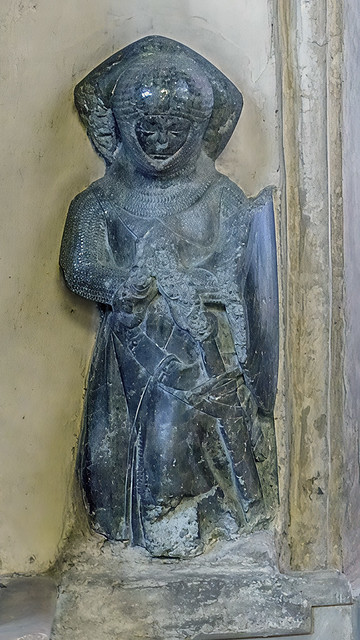Robert de Ros Heart Monument - Bottesford Leicestershire

The Memorial to Robert de Ros (c. 1237–1285) is a poignant 13th-century stone effigy and heart monument housed in the Church of St. Mary the Virgin in Bottesford, Leicestershire. Robert's memorial, one of the earliest, commemorates a key figure in the family's lineage, a knight and lord who played a role in the turbulent politics of the Second Barons' War. Originally at Croxton Abbey, a Cistercian monastery located approximately 5 miles northwest of Bottesford, the monument was relocated after the Dissolution of the Monasteries in 1538 and underscores its survival as a relic of medieval noble burial practices.
Medieval custom among high-ranking nobles often involved dividing the body for burial at multiple sacred sites to maximize spiritual benefits and family prestige. De Ros's embalmed heart was interred at Croxton Abbey in 1285, reflecting his d'Aubigny connections and the abbey's role in commemorating such elite donors. The stone heart monument—depicting his effigy with crossed legs, chainmail, and family arms, was commissioned by his heirs and erected over or near this burial. His body was buried at Kirkham Priory in Yorkshire (a de Ros foundation), and viscera at Belvoir Priory, fragmenting the remains across affiliated religious houses.
This memorial is a prime example of 13th-century English heart burials, symbolizing devotion and fragmentation of the noble body to multiple sacred sites for spiritual efficacy. It highlights the de Ros family's rise from Magna Carta barons to castle lords, their ties to royal Scotland and Arundel, and their architectural legacy in Bottesford. As the earliest Ros monument at Bottesford, it anchors the chancel's "gallery of ancestors," influencing later tombs' designs.
Sir Robert de Ros was the son of William de Ros and Lucy FitzPeter, grandson of Magna Carta surety Robert de Ros (d. 1226/7), and a descendant of Scottish royalty through his great-grandmother Isabel, illegitimate daughter of King William the Lion. Through his marriage to Isabel d'Aubigny (d. 1301), daughter and co-heiress of William d'Aubigny, 7th Earl of Arundel, he inherited the lordship of Belvoir Castle and extensive lands in Leicestershire, including Bottesford. A supporter of the baronial opposition to King Henry III, de Ros fought at the Battle of Lewes in 1264, capturing the king and Prince Edward, and was summoned to Simon de Montfort's Parliament that year, once thought to create the Barony of Ros by writ, though it is now attributed to his son William in 1299.
De Ros served as a commissioner of array in Yorkshire and Lincolnshire and patronized the Decorated Gothic phase of St. Mary's Church (c. 1280–1350). He died on 17 May 1285 at Belvoir Castle, leaving six sons and three daughters; his Inquisition Post Mortem that year detailed vast holdings.
